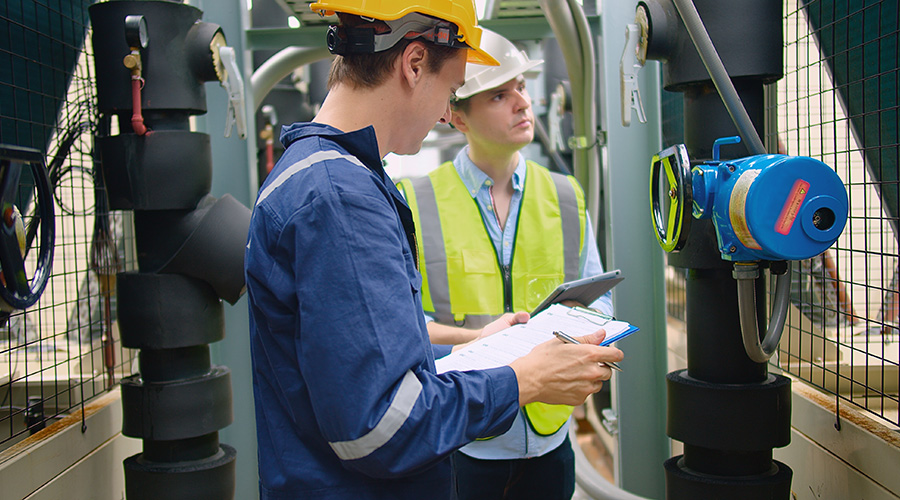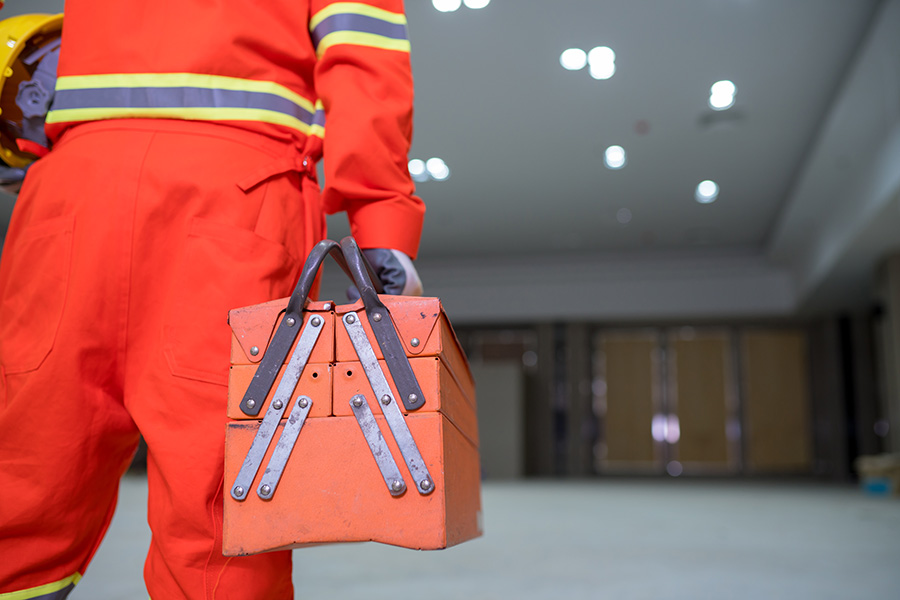
What to Do When OSHA Comes Knocking
Remaining professional and transparent is critical to making a good impression on OSHA. June 27, 2024
By Jeff Wardon, Jr., Assistant Editor
Being a facility manager can already be stressful enough on its own. However, when the U.S. Department of Labor’s Occupational Safety and Health Organization (OSHA) gets involved in a situation or does an audit, it adds another layer of stress to the job. It does not always have to be like this, though.
Rusti Dyals, CSP, national director, EHS, ESFM, will be presenting the session “What to Do When OSHA Inspects You” that will explore what facility managers can do to respond to OSHA inspections. This session will be at NFMT Remix 2024 in Las Vegas, running from October 29 to 30.
FacilitiesNet: What initial feelings do facility managers commonly experience when their facilities are under OSHA investigation, and why?
Rusti Dyals: Facilities managers typically feel that overwhelming dread and anxiety simply because of the unknown. Even myself, I have been in safety for 25 years and I have that automatic dread when I hear that OSHA is at one of my facilities or they are coming to see me. You end up thinking what did I do wrong? What did we do wrong? Did we hurt someone?
It is that unknown, and when you are trying to do the right thing, it is hard to find out that you might not have. So, I think that is the initial feeling that facility managers go through. The good news is that OSHA is good at quickly letting you know what the issues are. Whether it is during an open conference, an emailed inquiry or phone call, they are very upfront about the issues and how to resolve them.
At that point for a lot of us, you now know what the issue is. Now I know the problem that I am going to be tackling or helping OSHA solve. This this issue is and that makes at that point. Again, that dread and anxiety kind of lessens so that you are ready to go and work on the issue.
FacilitiesNet: What impact can the way facility teams handle an OSHA investigation have on the outcome of the investigation?
Dyals: So, it can have either a positive or negative impact. How the facility teams handle it is very important. Being professional, engaged and as transparent as possible is always going to leave a much more positive impression with OSHA. They will just think, “Oh, OK, they [the facility team] are invested in the situation or the improvements.” That is going to make a positive impression and possibly make a positive impact on the overall investigation.
On the opposite side of it, if you come across to OSHA as unprofessional, dismissive, aggressive or cagey, it is off-putting to an investigator. It also makes them wonder if you do not care about the employees, or if you are trying to hide something, and it makes them dig a little bit more or makes them hit a little bit harder.
Now, OSHA completely understands that you are not going to have the answer for everything, or that there might be proprietary information you cannot let out. Be upfront with them and let them know that you are not sure you can talk about certain information. Let them know that you need to communicate with other departments to make sure you can talk about this information. Again, that is about being up front and as transparent as possible. That is going to have a much more favorable impact and impression in the long run.
FacilitiesNet: What are some key strategies facility managers can use to best prepare for an OSHA visit?
Dyals: It starts with the plan. You need to have a plan and it needs to be written down – this is where it all begins. Who is going to check the credentials of the inspectors? Who do you need to contact within your organization? Who do you need to notify? Where are you going to put the OSHA inspectors while they are waiting? Who is going to help with documentation? All these things need to be a part of your plan.
Then once that is good and done, then it is about training people. They need to have access to that plan, and they need to know where it is. They also need to be trained in being professional and transparent, representing how you represent your company. All of these are part of your strategy.
One of the things that I really like is having a guide, especially for the receptionist or the first person that OSHA would come to. Have a three-ring binder off to the side of what to do in case OSHA shows up, that way they can grab it and go these are the things I need to do. Because as I said, when OSHA shows up, that anxiety comes out and having that quick reference of your game plan in a binder is going to make it a whole lot easier for the plan to get initiated and the process to go a lot smoother.
To learn more about what to do when OSHA visits, check out Dyals’ session at NFMT Remix 2024 this October. Register for Remix here.
Jeff Wardon, Jr. is the assistant editor for the facilities market
Next
Read next on FacilitiesNet












